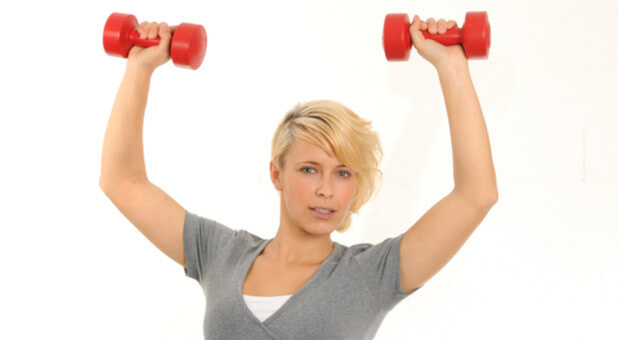Now is the time to turn your health aspirations into realized goals. But before you get started, make sure you understand the fundamentals when it comes to getting fit.
Many people think that as long as they work on their spiritual relationship they are caring for God’s temple. But our physical bodies, our emotions and our minds must be in good shape, too.
Besides owing it to ourselves to strive toward a healthier life, we owe it to God. Having good health will ensure that our time on Earth is more enjoyable and effective for Him.
Getting fit requires that you have some basic knowledge of how your body works. If you are going to achieve your fitness goals, you must address all three aspects of your health–cardiovascular capacity, muscle strength and endurance, and flexibility.
Your cardiovascular capacity is simply your ability to take in and process oxygen. The greater the workload on your heart, the more efficient it becomes.
Muscle strength is the ability to handle heavy loads quickly, while muscle endurance is the ability to go the long haul. We need both.
Then we must not forget flexibility. Your ability to stretch out your muscles and allow your body to recover will determine how effective your fitness and overall well-being will be in the future.
We need to exercise in order to live a healthy life. The more you know, the better equipped you will be to succeed in your program.
CARDIO EXERCISE THAT FITS When your heart is working at top performance, it is providing you with more oxygen, which will give your muscles more strength and your energy system a boost. The greater your capacity to process oxygen and use it, the lower your blood pressure will be because the heart doesn’t have to work as hard to get what it needs.
The heart needs workload forced upon it to make it pump harder and push blood throughout the body. Obtaining the health benefits you desire requires that you become knowledgeable about cardio exercise so you can work out properly.
When I train clients or speak to groups, I use the FITS formula to explain the parameters of proper exercise. “FITS” stands for frequency, intensity, time and style. We will explore these guidelines and how they apply to each of the three aspects of fitness.
Frequency Refers to how often you work out. According to Peg Jordan, in her book Fitness: Theory & Practice, the Aerobics and Fitness Association of America (AFAA) recommends that you engage in cardio exercise three to five days a week.
If you’re working out only three days a week, you probably won’t notice any serious changes to your outward appearance. However, you should receive healthy benefits such as reduced chances of heart disease and less illness.
The bottom line here is to ensure you are exercising enough times throughout the week to help your cardio ability (your heart) improve. I do a minimum of four cardio days a week.
Intensity Has to do with how hard you are working when you exercise. If you truly want to be healthy you will need to work at an intensity level that makes doing anything else impossible. Having an intensity level that is too low is probably one of the biggest mistakes people make when working out.
You can multitask–with little or no health benefits–or you can get serious, put the magazine and cell phone away, and do it right. If you are going to put in the time, make it count.
Time Refers to how long you work out. New AFAA research indicates that we need at least 30 minutes of continuous exercise for it to be effective for our cardiovascular health. And in 2003, the AFAA published new data released by the American Heart Association (AHA) that suggests we require a full hour of cumulative exercise each day in order to receive health benefits for the heart.
Everyday tasks such as walking, gardening and sweeping are certainly good for the cumulative effect, but they aren’t intense enough. You will need to ensure that you are balancing both high-intensity exercise and other activities to keep you mobile.
Most fitness classes are one hour in length to guarantee that you are getting a solid 30 minutes of true cardio exercise. When you take into account warm-up, cool-down and stretch, you are left with about 30 to 40 minutes of actual exercise.














































